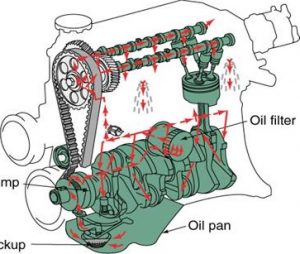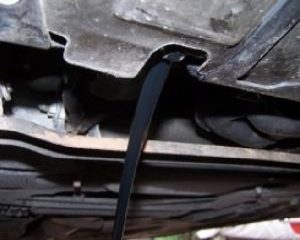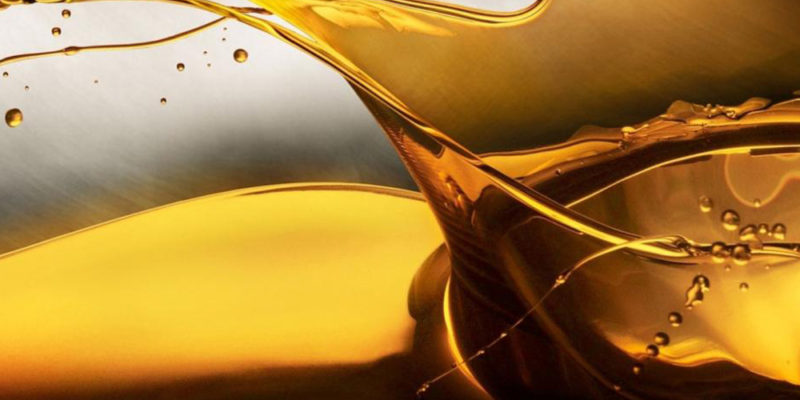We have all seen bright and clear fresh oil being poured into an engine when a vehicle is serviced or when the oil is topped up between services. At the next oil change, this same oil is drained looking dirty and contaminated, much darker in colour and with a pungent odour. What we don’t see is what happens to the oil inside the engine in between the two oil services.
When oil is poured into an engine it settles in the oil pan, also known as the sump, at the bottom of the engine. The oil journey begins when the engine is started and the oil is drawn up through the pickup screen and tube by the oil pump. The pump then directs the oil to the oil filter to be cleaned. From the filter, the oil makes its way through the main oil gallery in the cylinder block, to the crankshaft main bearings. It then flows through oil passages (small drilled holes) in the crankshaft to lubricate the piston connecting Oil pump rod bearings. Another oil passage in the block sends oil to the top of the engine to lubricate the valve drive train, including the camshaft Pickup bearings, cam lobes, valve lifters and the valve stems. Once pumped through the engine the oil returns to the oil pan via gravity.
 In some engines oil returning to the sump, drips on the rotating crankshaft and is thrown around to lubricate the pistons, rings and cylinder walls. In other designs, small holes are drilled through the piston connecting rods to spray oil on the pistons and cylinder walls.
In some engines oil returning to the sump, drips on the rotating crankshaft and is thrown around to lubricate the pistons, rings and cylinder walls. In other designs, small holes are drilled through the piston connecting rods to spray oil on the pistons and cylinder walls.
You may well wonder why the oil is dark and dirty when it is drained at the next service. Manufacturing modern engine oil is a precision operation. Painstaking effort is required to produce oils that will meet the demanding requirements of modern engine manufacturers. When new oil is poured from its sealed container into an engine, it goes from the controlled environment of the oil manufacturing plant into a completely uncontrolled chemical factory – the engine itself. Inside the engine the oil comes into contact with various harmful contaminants:
Water: For every litre of fuel burnt in the engine, about one litre of water is formed in the combustion chamber. At operating temperature this is not a problem since the water goes out the exhaust in vapour form (steam). When the engine is cold, however, some of the water goes past the piston rings into the oil sump. Water is one of the most destructive contaminants in lubricants. It attacks additives, causes rust and corrosion, induces base oil oxidation and reduces oil film strength.
Fuel: At start-up some of the atomised fuel comes into contact with the cold cylinder walls, condenses and find its way into the oil pan where it dilutes the oil. On the way down the fuel causes wash-down of the oil on the cylinder walls and accelerates ring, piston and cylinder wear. Fuel dilution also results in a premature loss of oil base number (loss of corrosion protection), deposit formation and degradation of the oil.
Soot: It is a by-product of combustion and exists in all in-service engine oils, diesel engine motor oil in particular. It reaches the engine oil by various means such as piston blow-by and the scraping action of the oil rings.
Whilst the presence of soot is normal in used engine oil, high concentrations of soot will lead to viscosity increase, sludge, engine deposits and increased wear. Soot is also the major contributor to oil darkening.
Dust: The ingestion of hard abrasive particles into an engine leads to rapid wear of engine components. These particles come in multiple forms including dust/sand, which consists of Silica. Normally the air filter will remove most of the dust from the air going into an engine. However, incorrect air filter maintenance and a leaking air intake system will introduce dust into the engine. Silica is much harder than engine components and less than 1 00 grams of dust can severely affect expected engine life.
Wear Metals: These contaminants are generated inside the engine by the wear of mechanical components. The wear debris is in the form of hard metal particles and abrasive metal oxides. Wear metal particles of sizes smaller than that controlled by standard filtration may well build up to grossly contaminate the oil. These contaminants can wear moving parts as well as clog oil flow passages and heat exchange surfaces. If wear debris accumulates in the oil, the result is more wear, generating more contaminants.
This process is known as the chain-reaction-of-wear. In addition, certain wear metals, such as copper, act as catalysts to promote oil oxidation. 
To make things even worse, the oil comes into contact with high temperatures during its journey through the engine, temperatures in excess of 600 degree Celsius. The effect of elevated temperatures is oil oxidation, also called Black Death. Oxidation causes the oil to darken and break down to form varnish, sludge, sedimentation, and acids. The acids are corrosive to metals in the engine and the sludge can increase the viscosity of the oil, causing it to thicken. It can also increase wear and plug filters and oil passages resulting in oil starvation. In addition, oxidation is a major cause for additive depletion, base oil breakdown, loss in resistance to foaming, acid number increase, and corrosion. The good news is that modern, premium performance engine oils are formulated to withstand high temperatures and oxidation much better than oils from the past. It is therefore important to use a high-quality motor oil that meets the requirements specified by the engine manufacturer.
In conclusion, we need to slot in an important comment about oil change periods, which are directly dependent on lubricant life. Oils are primarily changed to get rid of all these harmful contaminants. It is also essential to fit a new oil filter with every lube service. Dirty or clogged filters allow contaminants to flow straight to your engine where they are responsible for the damages discussed above, as well as affecting fuel economy. You also risk blocking the flow of oil to your engine, which will result in engine failure. Finally, wear metals trapped in the old oil filter will promote early oxidation of the new oil.
Don’t become a victim of Black Death — change your engine oil sooner rather than later, make sure the oil conforms to the specifications recommended by the engine manufacturer and fit a new good quality filter. If in doubt, phone us on 01 1 964 1829 to ensure you are using the correct lubricants for your vehicle or equipment.


